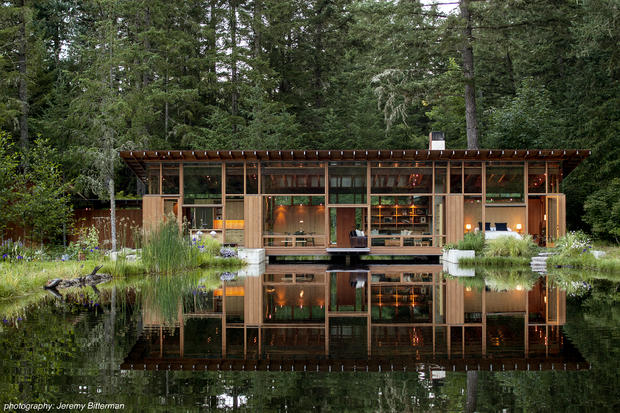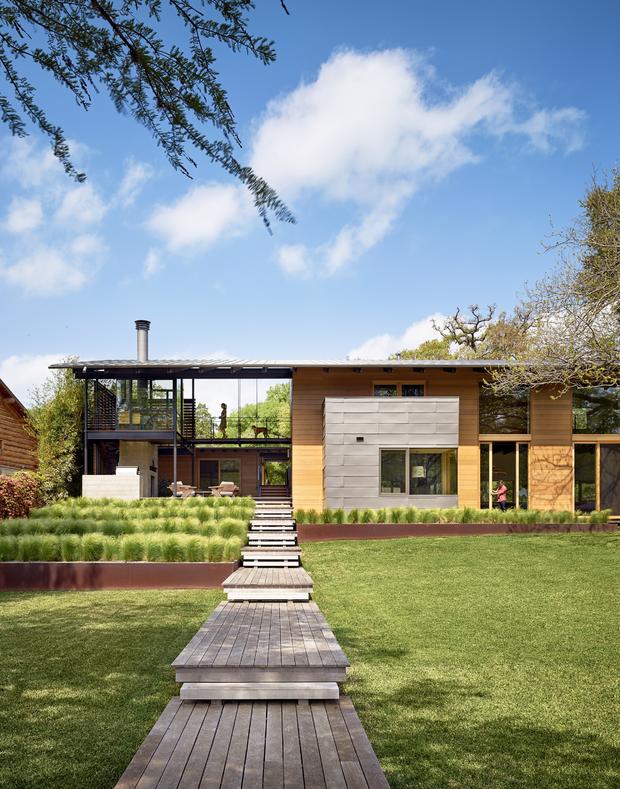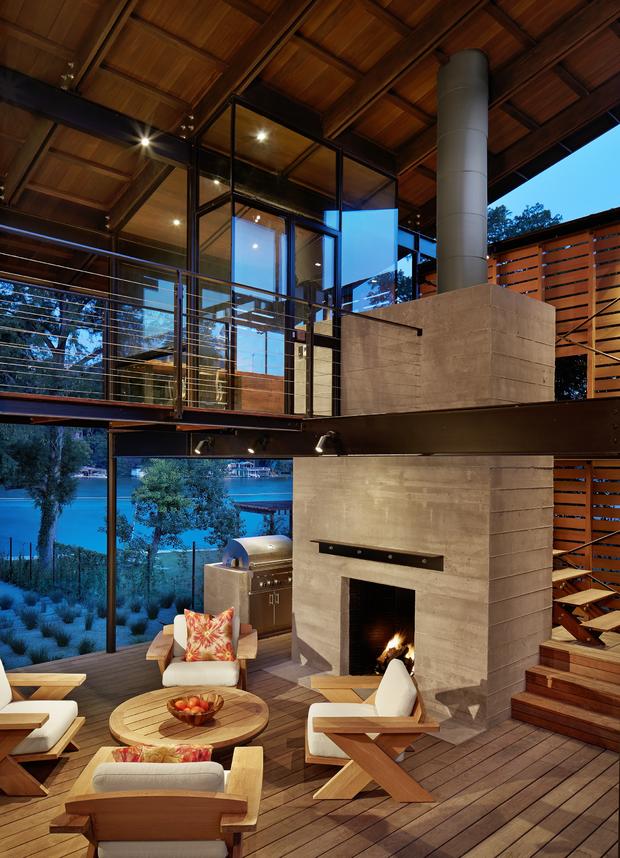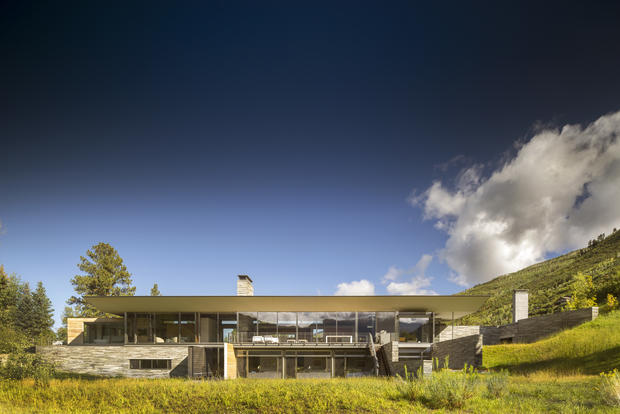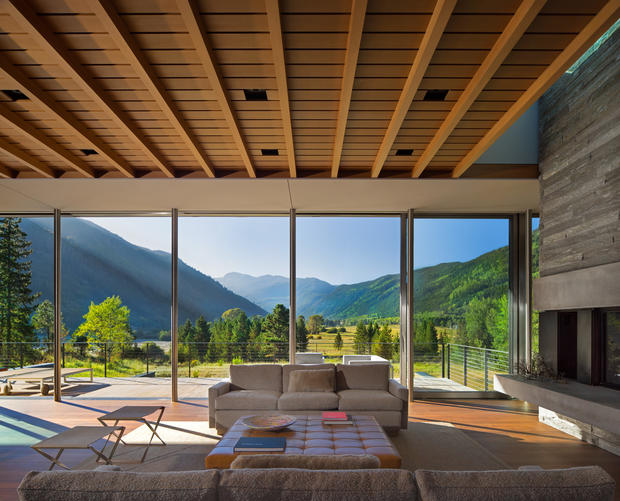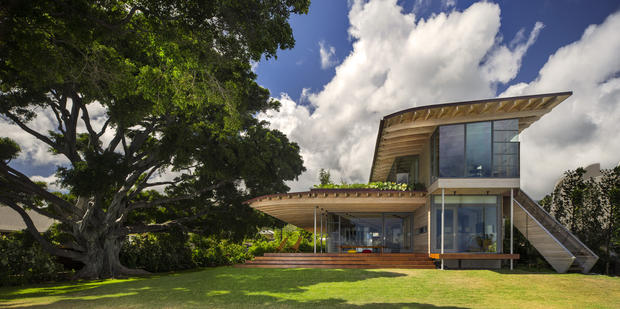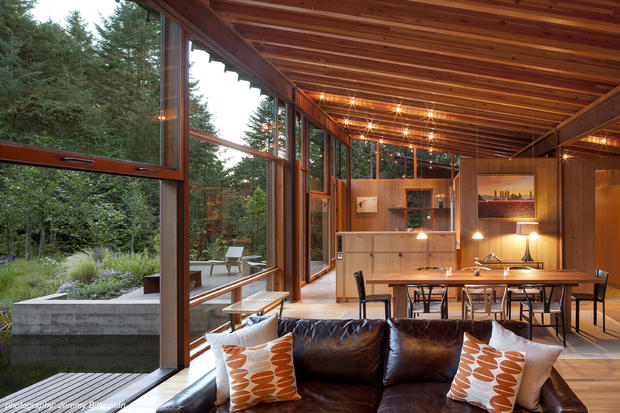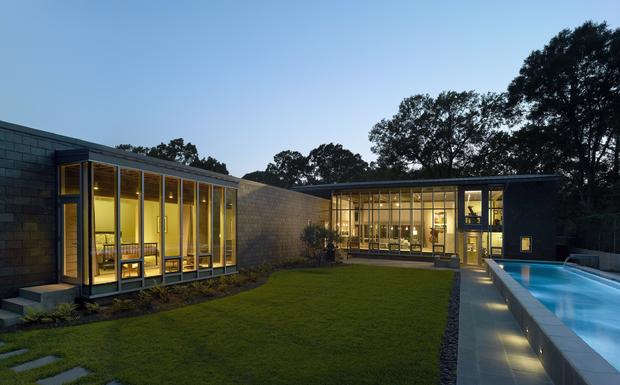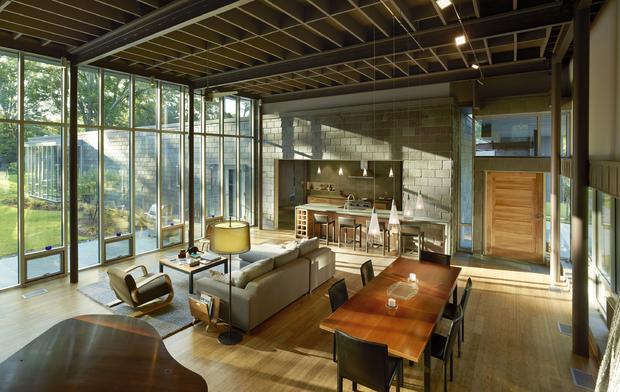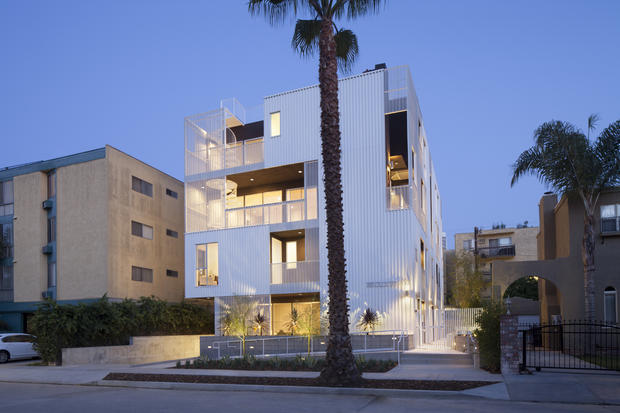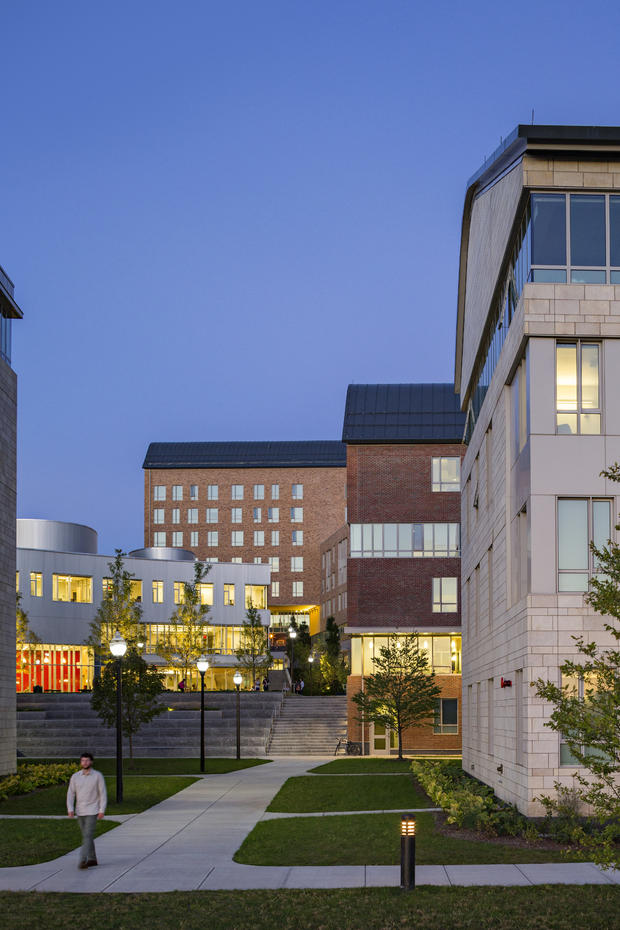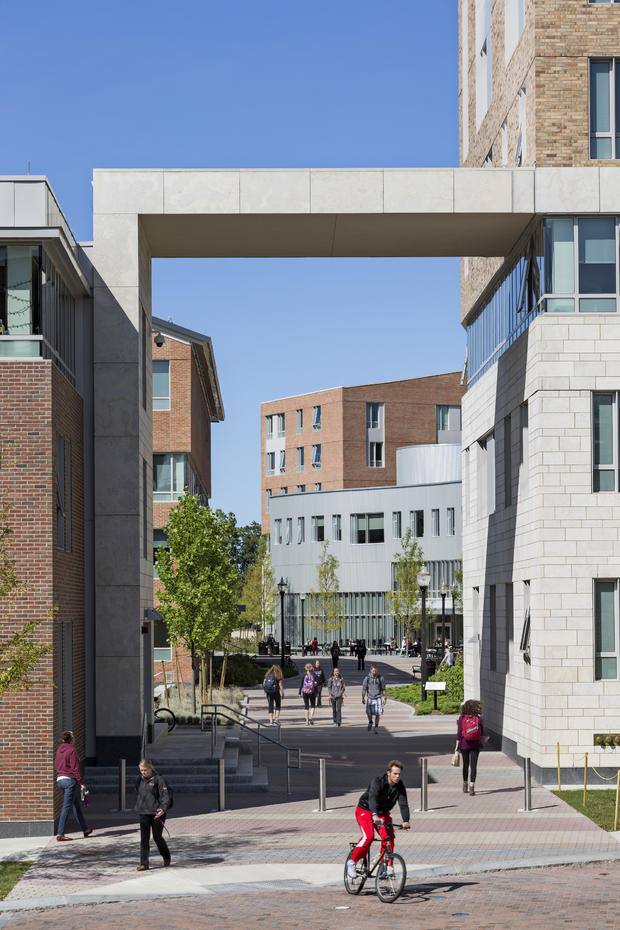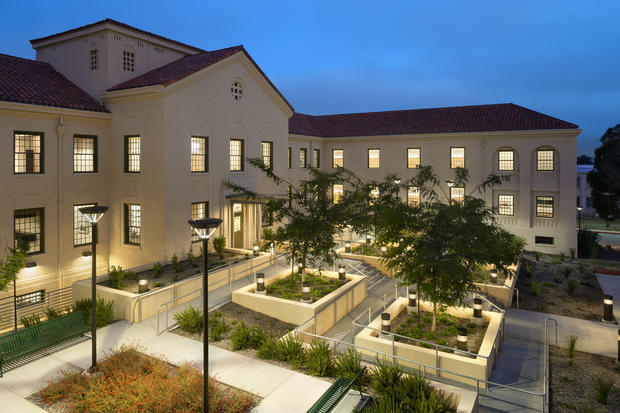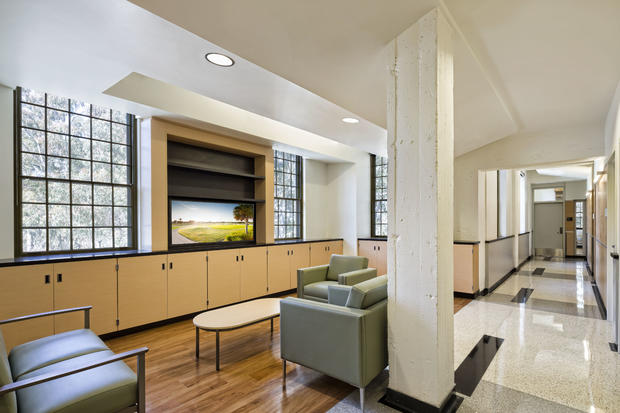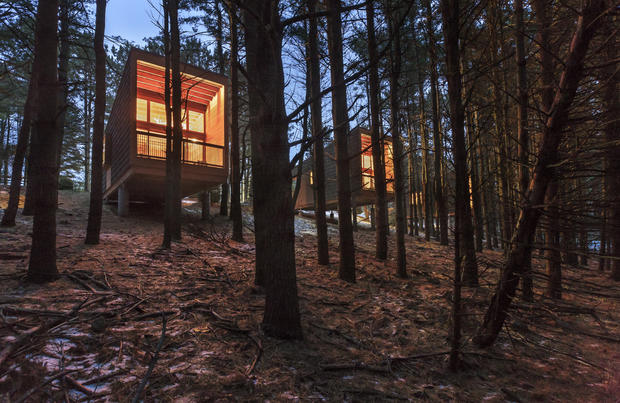Architects' picks for 2016's 10 best American homes
Where can you find the best-designed homes in the country? Each year, the American Institute of Architects picks 10 homes that exemplify outstanding American home design and function.
Louisiana-based architect Kevin Harris and four other jurors selected by the AIA spent months combing through entries to find the best of the best.
The awards honor work in four categories: One/Two Family Custom Housing, One/Two Family Production Housing, Multifamily Housing and Special Housing.
However, no winners were selected in the Production Housing category this year due to a lack of submissions, Harris said.
"The majority of new houses are production houses," he said. As opposed to custom homes, production homes are built by companies that use the same blueprint with minor changes or customizations to build a lot of homes. "We need to toot the horn that production housing has had really good influence from architects, and we haven't seen that in the last few years."
When making their decisions, the jurors looked at not only the designs of the homes themselves, but how the homes met their occupants' needs and how they fit into their environment.
"The context was really emphasized -- in single-family and multifamily homes -- looking at how it was part of a bigger environment," Harris said.
Many of the submitted single-family homes, for example, were built in stunning natural settings: in mountain passes, on beaches or in forests where the architects created designs that brought the beauty of the setting into the home.
Some common trends among the top entries were an "awareness of energy consumption" and the use of locally sourced materials, Harris said.
Click ahead to see which 10 projects rose above the rest.
Hog Pen Creek Retreat – Austin, Texas
Designed by Lake|Flato Architects, this home was honored in the One/Two Family Custom Housing category. It's located where Hog Pen Creek meets Lake Austin and was designed to evoke "the playfulness of summer on the lake," according to the architects.
Hog Pen Creek Retreat – Austin, Texas
The L-shaped home is built into a hillside and has a long exterior boardwalk connecting buildings that "step down" the hill, ending at a screened pavilion by the water.
Independence Pass Residence – Aspen, Colorado
This home of glass, wood and stone was designed by Bohlin Cywinski Jackson and is located on the edge of a nature preserve with views of the Roaring Fork River and the Rocky Mountains. It was honored in the One/Two Family Custom housing category.
Independence Pass Residence – Aspen, Colorado
The home's stone and wooden elements give strength to the otherwise transparent home and help anchor it in its mountain environment.
Island Residence – Honolulu, Hawaii
The owners wanted this oceanside home to reflect their Japanese heritage and the culture of the Hawaiian islands "without being imitative or contrived," the Bohlin Cywinski Jackson architects wrote. It was chosen in the One/Two Family Custom housing category.
Island Residence – Honolulu, Hawaii
The home uses outdoor spaces and large swaths of glass to bring elements of the outside environment -- like lush tropical foliage -- into the home.
Newberg Residence – Newberg, Oregon
This home and guest house were designed "so the owners can connect with the wild creatures that come to the water" at the pond, according to Cutler Anderson Architects. They've even given a name -- Herman -- to the Great Blue Heron they often see.
Newberg Residence – Newberg, Oregon
The home, which was honored in the One/Two Family Custom Housing category, is actually built as a bridge across the north end of the pond and is accessed by crossing another small bridge. The guest house is connected by a covered outdoor walkway.
Oak Ridge House – Jackson, Mississippi
Like the other homes recognized in the One/Two Family Custom Housing category, this home by Duvall Decker Architects is designed to "draw the outdoors in (and) draw the family out," according to the architects.
Oak Ridge House – Jackson, Mississippi
The home, like others in this category, uses large walls of windows to open up to its environment and bring natural light inside.
1180 Fourth Street – San Francisco, California
This development in San Francisco's Mission Bay neighborhood occupies a full city block and is designed to to house 150 low-income and formerly homeless families. It was recognized in the Multifamily Living category. The project originated with WRT Solomon E.T.C., which merged with Mithun during the project. Full Circle Architecture and Kennerly Architecture and Planning served as associate architect and associate design architect, respectively.
1180 Fourth Street – San Francisco, California
"It's a beautiful work in and of itself, and it's integrated beautifully into the city," Harris said of the project. "The ground floor is connected to the fabric of the streets on all four sides of the block with commercial activity and functions for the neighborhood."
Cloverdale749 – Los Angeles
This six-unit Los Angeles building designed by Lorcan O'Herlihy Architects was also recognized in the Multifamily Living category. It has 10,500 square feet of space and a rooftop deck overlooking the city.
Cloverdale749 – Los Angeles
The building's white facade helps keep it cool, reduces energy use and visually blurs the definition between the solid walls and partially shielded outdoor spaces, according to the architects.
Commonwealth Honors College, University of Massachusetts – Amherst, Massachusetts
This complex of seven buildings housing 1,500 students was designed by William Rawn Associates and was recognized in the Specialized Housing category.
Commonwealth Honors College, University of Massachusetts – Amherst, Massachusetts
"You've got seven buildings in different shapes and materials inspired by an Italian hillside village," Harris said. The project gives students the impression that "you're not part of giant beehive collective, you're an individual," he said.
Homeless Veterans Transitional Housing, VA Campus – Los Angeles, California
This project by LEO A. DALY was a 1940s-era mental hospital that was repurposed as transitional housing for 65 homeless veterans and was recognized in the Specialized Housing category. In addition to living quarters, it also provides a fitness center, communal sitting areas and a large kitchen.
Homeless Veterans Transitional Housing, VA Campus – Los Angeles, California
"This building doesn't just house (the veterans)," Harris said. "It also took care of their other needs, their psychological, physical and social needs. It's an example of using good architecture almost as therapy."
Whitetail Woods Regional Park Camper Cabins – Farmington, Minnesota
This cluster of three cabins in the forest of the Whitetail Woods Regional Park was designed by HGA and honored in the Specialized Housing category. Each can accommodate up to four campers in 227 square feet of living space with an 80-square-foot deck.
Whitetail Woods Regional Park Camper Cabins – Farmington, Minnesota
The cabins, which are built into the side of a hill, give the effect of being in a private treehouse, Harris said. "They're completely private and completely open (to nature) at the same time."
